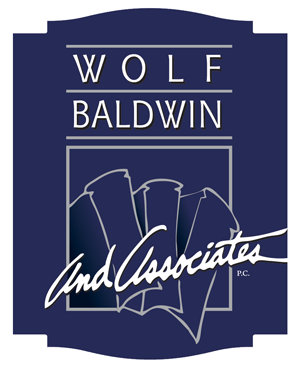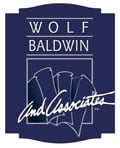Calculation Of Workers’ Compensation Benefits
How Are Worker’s Compensation Benefits Calculated?
The calculation of an injured worker’s wage loss benefits under the Pennsylvania Workers’ Compensation Act can be quite a confusing topic to both Employers and Employees alike. The way in which an employee is paid can have significant ramifications if the employee is later injured. While in some cases the calculation is quite simple, there are many more instances in which it is not. More importantly, if the calculation is done incorrectly, the loss of income to the injured worker (called a “claimant”) can often be devastating. Indeed, many claimants are often improperly paid, only to find out years later that they are owed thousands of dollars.
The most common calculation of benefits under the Act is outlined in Section 309, and is as follows: if the employee has worked for at least a full year before the injury, the gross wages over that period are analyzed and split into four equal quarters of 13 weeks. 77 P.S. §583. The sum of the three highest quarters are then divided by 3 to calculate what is then called the pre-injury Average Weekly Wage (“AWW”). Typically, 66 and two-thirds percent of the AWW will be the corresponding workers’ compensation benefit rate. If the claimant’s wages are fixed by the year, month, or week, then the AWW will be based on an average of any of those numbers, and will include weekly boarding, tips, and any annual bonus (divided by 52 weeks). Sounds simple enough, right? Unfortunately, AWW calculations can become very complicated when other factors enter the picture. What if the employee has not worked for a complete year? What if the injury occurs on the first day on the job? What if the employee receives pay based on commission, and now that an injury occurred, that commission will not be recognized? You can see how this issue can be troubling to both the employer and the employee. There are other frequent deviations from the norms. The typical two-thirds calculation outlined above is only used when the claimant’s wages fall above a specific range of wages set by the Bureau each year. For example, in 2008, if a claimant’s AWW is more than $605.26, the compensation rate will be 66 and two-thirds percent. An AWW between $448.33 and $605.25 will result in a set compensation rate of $403.50, regardless of where the AWW falls in that range. Any AWW falling below $403.50 will result in the claimant receiving 90% of the wage. No matter how high the AWW is, however, a claimant may only receive the maximum allowable for an injury sustained in a given year, which in 2008 was $807.00. In other words, even if a claimant’s AWW is very high, it will be capped by the maximum allowed in that year. The minimums and maximums change every year.
So what happens when a claimant has not worked for her employer for a full year before her injury? The answer will depend on how long she actually did work. If the claimant has not completed three consecutive thirteen-week periods, then the AWW will be the average of any completed 13 week periods immediately preceding the work injury. If the claimant has worked less than 13 weeks, the AWW will be based on the hourly wage multiplied by the hours per week that the claimant was expected to work. This “expected hours” issue has been heavily litigated because the employer and the claimant can have vastly different viewpoints on how many hours the claimant was expected to work. Often, the employer will testify that the claimant was expected to work only 40 hours, and the claimant will testify that he expected frequent overtime. Usually, there is no employment agreement that spells out this expectation. The employee may challenge the AWW calculated by the employer if it does not fairly assess the claimant’s earning power. This often occurs in situations where the wages are based on commission.
Recent case law has made clear that perquisites such as reimbursed board and lodging may be added to the claimant’s AWW. In Lennon ex rel. Lennon v. W.C.A.B. (Epps Aviation, Inc.), 934 A.2d 153 (Pa.Cmwlth. 2007), the claimant, an airplane pilot, received expense reimbursement for board and lodging from his employer. The Commonwealth Court held that these amounts are includable in the AWW.
It is important to remember that the AWW on gross wages is calculated prior to any deductions, such as taxes, social security, or health benefits. This is often a misconception of both employees and employers alike. However, the issue of taxable income is often an issue that can negatively affect a claimant quite severely. Generally, any income that is not taxed, or reported as income for tax reasons, will not be included in the calculation of a claimant’s AWW. For example, a waiter who does not report his tips as income may be precluded from including such income in the event that he is hurt. Thus, while this person has managed to escape paying taxes (assuming he is not audited!) should he be injured his compensation benefits under the Act may be drastically lower than they would otherwise be. A waiter may only make a very small hourly wage, and make the vast majority of his income from his tips. If those tips are not reported for taxes, they most likely will not be included in his AWW calculation. If the waiter is severely injured and he must live on his workers’ compensation benefits for years, it is not hard to see that the perceived tax benefit of not reporting the tips was clearly not worth the decrease in the workers’ comp benefit. In some cases, such as the above example, if the claimant’s wages were not reported to the IRS the year before, it may be worth paying the penalty to file an amended (and late) tax return to make sure that the AWW is based upon the proper wages.
Insurance carriers and self-insured employers should be aware that a miscalculation of a claimant’s AWW may result in penalties and may be the subject of a Petition to Review the AWW at some later date. Any claimant may file a Review Petition at any time to have a judge review any mistakes in the calculation. If a mistake is found, even three years after the inception of the claim, the carrier would be responsible for not only the back owed money, but also interest at 10% per year, and possibly a penalty for violating the Act. Many employers will just take the claimant’s hourly rate and multiply that number by 40 hours. But, if the claimant has worked overtime, received bonuses, or has been reimbursed for out-of-pocket expenses such as board and lodging, it is a mistake to fail to include those amounts.
An AWW calculation is very serious business when an injured worker is forced to live on workers’ compensation benefits alone for many years. It is important to note that these benefits are not adjusted for inflation or standards of living. If you are injured now, your AWW will be the basis for your benefits one year from now, just as it would be ten years from now (assuming no change in the Act). Employers have an interest in calculating the pre-injury wages correctly in the first place to avoid litigation, interest, and penalties down the road. Employees have an interest in being paid the correct amount of workers’ compensation benefits from the very beginning of a claim. It is necessary to consult with competent counsel to ensure that these calculations are performed correctly.
Our attorneys at Wolf, Baldwin & Associates, P.C. are able to answer your questions regarding Pennsylvania’s Workers’ Compensation and collateral benefits. Our lawyers are experienced in workers’ compensation cases, representing both employees. Please click here to contact us.

